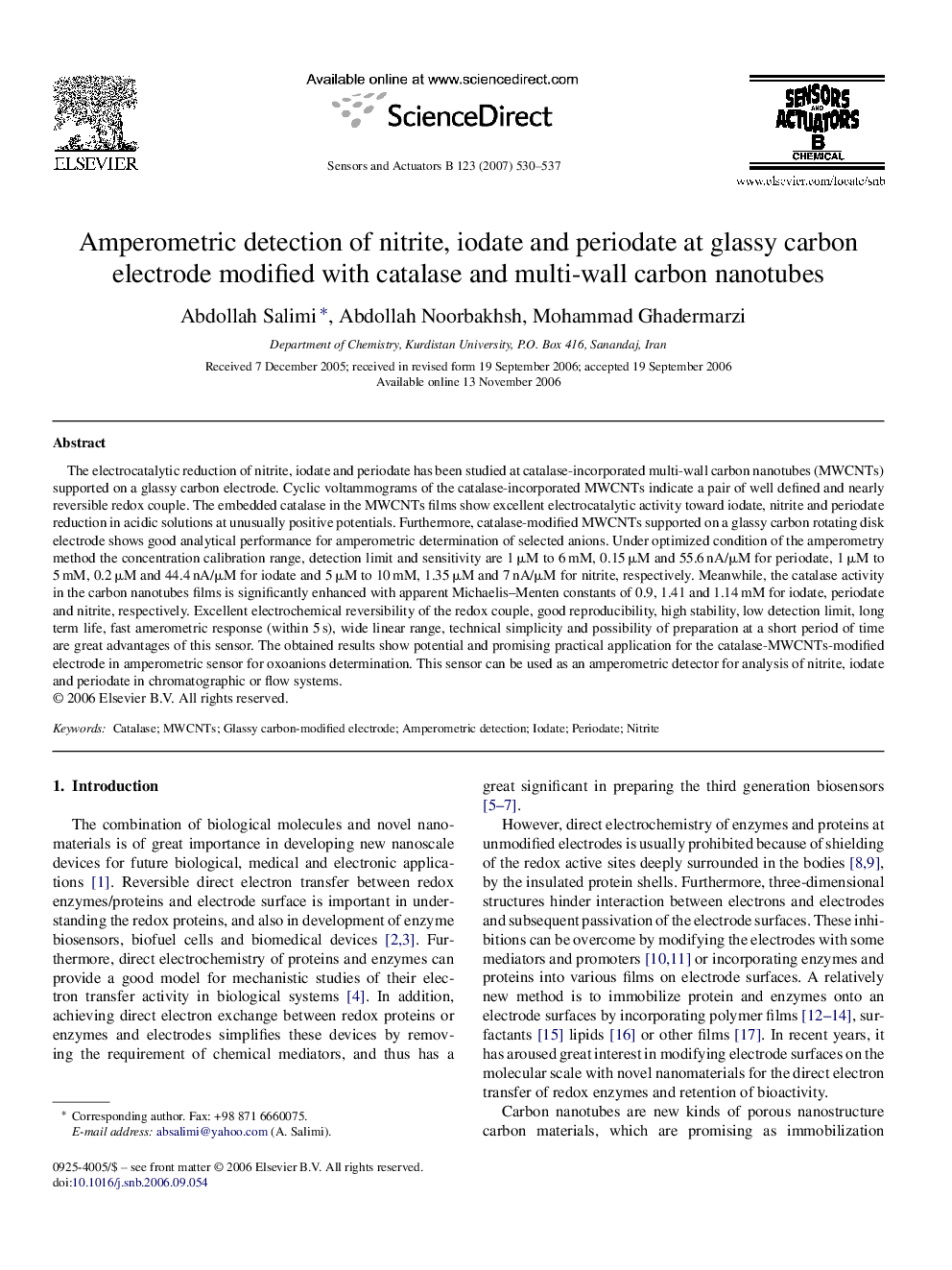| Article ID | Journal | Published Year | Pages | File Type |
|---|---|---|---|---|
| 741787 | Sensors and Actuators B: Chemical | 2007 | 8 Pages |
The electrocatalytic reduction of nitrite, iodate and periodate has been studied at catalase-incorporated multi-wall carbon nanotubes (MWCNTs) supported on a glassy carbon electrode. Cyclic voltammograms of the catalase-incorporated MWCNTs indicate a pair of well defined and nearly reversible redox couple. The embedded catalase in the MWCNTs films show excellent electrocatalytic activity toward iodate, nitrite and periodate reduction in acidic solutions at unusually positive potentials. Furthermore, catalase-modified MWCNTs supported on a glassy carbon rotating disk electrode shows good analytical performance for amperometric determination of selected anions. Under optimized condition of the amperometry method the concentration calibration range, detection limit and sensitivity are 1 μM to 6 mM, 0.15 μM and 55.6 nA/μM for periodate, 1 μM to 5 mM, 0.2 μM and 44.4 nA/μM for iodate and 5 μM to 10 mM, 1.35 μM and 7 nA/μM for nitrite, respectively. Meanwhile, the catalase activity in the carbon nanotubes films is significantly enhanced with apparent Michaelis–Menten constants of 0.9, 1.41 and 1.14 mM for iodate, periodate and nitrite, respectively. Excellent electrochemical reversibility of the redox couple, good reproducibility, high stability, low detection limit, long term life, fast amerometric response (within 5 s), wide linear range, technical simplicity and possibility of preparation at a short period of time are great advantages of this sensor. The obtained results show potential and promising practical application for the catalase-MWCNTs-modified electrode in amperometric sensor for oxoanions determination. This sensor can be used as an amperometric detector for analysis of nitrite, iodate and periodate in chromatographic or flow systems.
